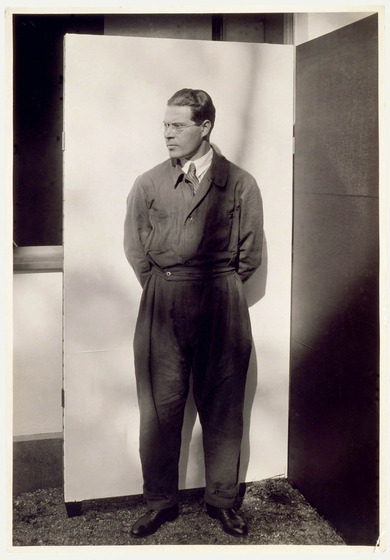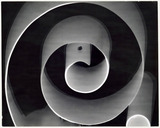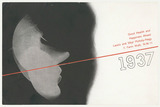László Moholy-Nagy
László Moholy-Nagy
Für einen Künstler gibt es nicht so etwas wie sein Land.
[For an artist there is no such thing as his country. (ed. trans.)]
László Moholy-Nagy talking to Sergei Eisenstein, 1933
| Born | on 20 July 1895 in Bácsborsód, Hungary |
|---|---|
| Died | on 24 November 1946 in Chicago, USA |
| Exile | Netherlands, Great Britain (United Kingdom), United States of America |
| Profession | Photographer, Designer, Painter |
During his 51 years of life, László Moholy-Nagy lived in six different countries. As a citizen of Hungary of Jewish descent, he never saw himself as an emigrant despite the fact that he emigrated to Vienna in 1919 following the fall of the Hungarian Soviet Republic. In 1920 he moved to Berlin and, when he was appointed to the Bauhaus in 1923, he lived in Weimar and Dessau. He wasn’t yet 30 years of age when he left Germany again in 1934, because he risked arrest when he refused to comply with the Reich Chamber of Culture’s orders to hand in three of his works. In Amsterdam, thanks to his good connections there, he could look forward to better working conditions as an avant-garde artist. One year later Moholy-Nagy emigrated to London, opened a design studio there and married his partner Sibylle Pietzsch, who had followed him to London from Berlin. There he worked on films and books and had to learn English.
In 1937, the year in which his works were shown in the “Degenerate Art” exhibition in Munich, he emigrated to the USA. There he founded The New Bauhaus school of design which had to close after a year due to financial difficulties. 1939 saw him open the School of Design in Chicago (from 1944 the Institute of Design). He received American citizenship in 1946 and his first solo exhibition in the USA that same year. He died of leukaemia in Chicago on 24 November 1946. His extensive artistic oeuvre is marked by its bringing together of art, technology, science, aesthetics and a joy in experimentation. He left behind photographs, photograms, photo-sculptural and typographic works, sculptures, paintings, films, stage set designs and books.
Selected works:
Komposition A XXI (painting, 1925)
Militarismus (Fotoplastik, 1927)
Lichtspiel: schwarz-weiß-grau (Film, 1930)
The Street Markets of London (book, 1936)
CH Beata I (painting, 1939)
Pacmac (oil on Plexiglass, 1943)
Further reading:
Wessing, Gudrun: Als Lichtvisionen von Schatten überholt wurden. Zur Situation der Bauhäusler um 1933 und Moholys Neubeginn nach den Jahren der Emigration. In: über moholy-nagy. Bielefeld: Kerber 1995, S. 45 – 72
Borchard-Hume, Achim (Hg.): Albers and Moholy-Nagy. From Bauhaus to the New World. London: Tate Modern 2006
Pfeiffer, Ingrid / Hollein, Max: László Moholy-Nagy. Retrospektive. München, Berlin, London, New York: Prestel 2009




